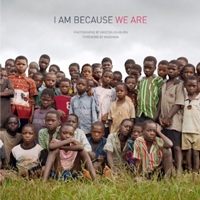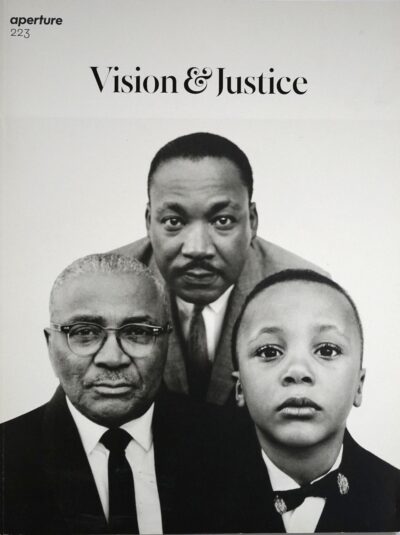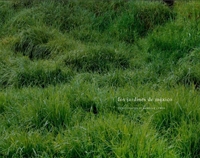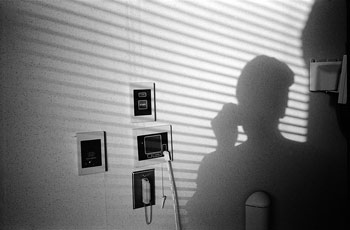I Am Because We Are is the companion volume to the acclaimed forthcoming documentary by Nathan Rissman and Madonna. This book of images by award-winning photojournalist Kristen Ashburn provides an intimate look at the lives of eight children featured in the film and reveals the harsh reality of the AIDS pandemic throughout southern Africa.
Bio

Ashburn began photographing the impact of AIDS in southern Africa in 2001. Since then her work has taken her to Iraq a year after the US-led invasion, as well as to Israel and the Palestinian Territories where she produced stories on Jewish settlers in Gaza, suicide bombers, Palestinian youth, and PLO Chairman Yasser Arafat during his house arrest in Ramallah. She also covered the immediate aftermath of the tsunami in Sri Lanka, Hurricane Katrina in New Orleans, and the spread of tuberculosis in the penal system in Russia. Her work has appeared in many publications, including The New Yorker, Time, Newsweek, and Life. She lives in New York City.
Her numerous honors include an Emmy Award nomination, the John Faber Award from the Overseas Press Club of America, a POY-Pictures of the Year Award (2007), a Getty Grant (2006), National Press Photographers Association’s (NNPA) Best of Photojournalism Award (2007, 2006, 2003), and two World Press Photo prizes (2005, 2003). In 2004 she won Canon’s Female Photojournalist Award (AFJ) and was named as one of Photo District News (PDN) top Thirty Emerging Photographers. In 2003 she was granted the Marty Forscher Fellowship for Humanistic Photography.
Committed to humanitarianism beyond the lens, she made five trips to Romania while still in college to work with orphans with neurological impairments, and in 1997 established an American chapter of the Romanian Challenge Appeal, becoming its first chairperson. Ashburn is also one of the directors of Through the Eyes of Children: The Rwanda Project, a charity that teaches photography to orphans of the 1994 Rwandan genocide and supports them through the sale of their images.
Bio
Ashburn began photographing the impact of AIDS in southern Africa in 2001. Since then her work has taken her to Iraq a year after the US-led invasion, as well as to Israel and the Palestinian Territories where she produced stories on Jewish settlers in Gaza, suicide bombers, Palestinian youth, and PLO Chairman Yasser Arafat during his house arrest in Ramallah. She also covered the immediate aftermath of the tsunami in Sri Lanka, Hurricane Katrina in New Orleans, and the spread of tuberculosis in the penal system in Russia. Her work has appeared in many publications, including The New Yorker, Time, Newsweek, and Life. She lives in New York City.
Her numerous honors include an Emmy Award nomination, the John Faber Award from the Overseas Press Club of America, a POY-Pictures of the Year Award (2007), a Getty Grant (2006), National Press Photographers Association’s (NNPA) Best of Photojournalism Award (2007, 2006, 2003), and two World Press Photo prizes (2005, 2003). In 2004 she won Canon’s Female Photojournalist Award (AFJ) and was named as one of Photo District News (PDN) top Thirty Emerging Photographers. In 2003 she was granted the Marty Forscher Fellowship for Humanistic Photography.
Committed to humanitarianism beyond the lens, she made five trips to Romania while still in college to work with orphans with neurological impairments, and in 1997 established an American chapter of the Romanian Challenge Appeal, becoming its first chairperson. Ashburn is also one of the directors of Through the Eyes of Children: The Rwanda Project, a charity that teaches photography to orphans of the 1994 Rwandan genocide and supports them through the sale of their images.
BLOODLINE: AIDS and Family is Kristen Ashburn’s intimate portrait of African mothers, fathers and children being crushed by AIDS. Ashburn’s work connects us to these people deeply; we learn that only through such connection is hope possible. See the project here.
Q & A with the Artist
1. Why and how did you decide to become a documentary photographer?
I studied photography at Rochester Institute of Photography and then New York University TISH School of the Arts. During my college years, I volunteered in Romania with orphans housed in State-run institutions. These children were completely cut off from society and many of their human rights were violated. They were abused both physically and mentally and had very little access to education or rehabilitation.
I began photographing the children’s lives as a means to show people what was happening. In doing this, I began to truly understand the power of documentary photography. There was only so much that I could explain in words. Photographs carried a deeper level of weight both emotionally and as a source of information.
As I matured as a photographer I carried that experience and passion into other stories I covered. As a photojournalist, I felt I was not only reporting on stories people needed to see, but I was preserving our collective history. This was very powerful to me.
2. Why and how did you decide to focus on global health?
I choose the stories I work on based on their relevance to and impact on our world. There was not an intentional effort to focus on global health. The AIDS pandemic is THE story of our time. The virus has decimated whole families and communities not only in Africa, but around the world. The fact that the Sub-Saharan region of Africa is more heavily affected by HIV and AIDS than any other region of the world made it easy when deciding where to focus my time.
I worked on covering the AIDS Pandemic on and off between 2001 and 2007. It was a slow process due to lack of funding and interest from the media as a whole. I felt that there was not enough coverage of the crisis. Photo editors thought differently. So, in the end, I relied mostly on grants to fund my work. During these years I also worked on the story of Multi Drug Resistant Tuberculosis in Russian prisons. Tuberculosis is one of the leading causes of death for people living with HIV and clearly another important global health issue.
3. What is the main point/understanding that you’d like the viewer to get out of your work?
I hope my work documenting the AIDS pandemic in Africa not only helps viewers connect with the people I photographed in an intimate way, but that the photographs and stories I captured memorialize the lives lost. The statistics are overwhelming and hard to digest but the face of a child suffering from a preventable, treatable disease without access to drugs is hard to forget. Children, regardless of where they happen to be born, have the right to the same life saving drugs that we often take for granted for our own children. This story is not only about HIV/ AIDS, it is about access to resources. Millions upon millions of men, women and children have died and continue to die because they do not have access to treatment.
4. What have you personally gained from your experiences and how have they influenced your subsequent work?
This is a complicated question with layers of answers. On a personal level, my experiences as a photographer have helped to mold me into the person I am today. I have learned much about myself and the world we live in. As a photographer, I have learned how to approach a subject with tact and patience, but each situation challenges me to be the best person I can be. It is not easy to approach people in difficult situations and ask them to open their lives to the camera.
I find that people want to tell their stories and they find incredible empowerment in the process. The courage of the people I meet and photograph gives me confidence to tell their story. But I have also learned that nothing is worth a single image and that sometimes the only thing to do is put my camera down and watch and listen. I have become allergic to the divide between the haves and the have-nots and the power that this divide possesses. I constantly question my motives and the true nature of photojournalism.
5. What kind of responses has your work received from the health/science communities in the US?
My work has been published in newspapers and magazines world-wide in conjunction with health and science articles. I have been asked to speak to medical students and nurses on the subject, which I feel is testament to the power of the work to communicate.





